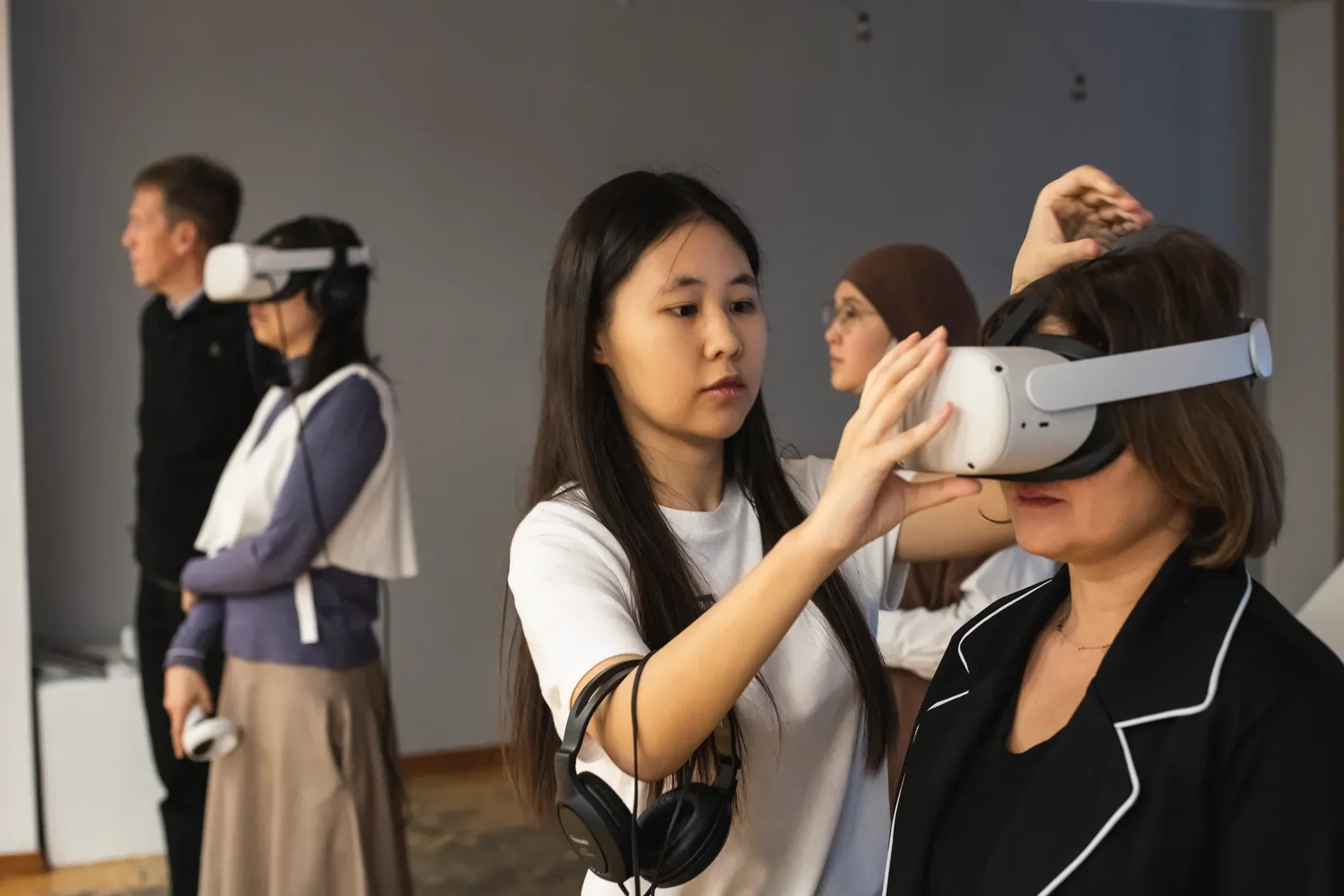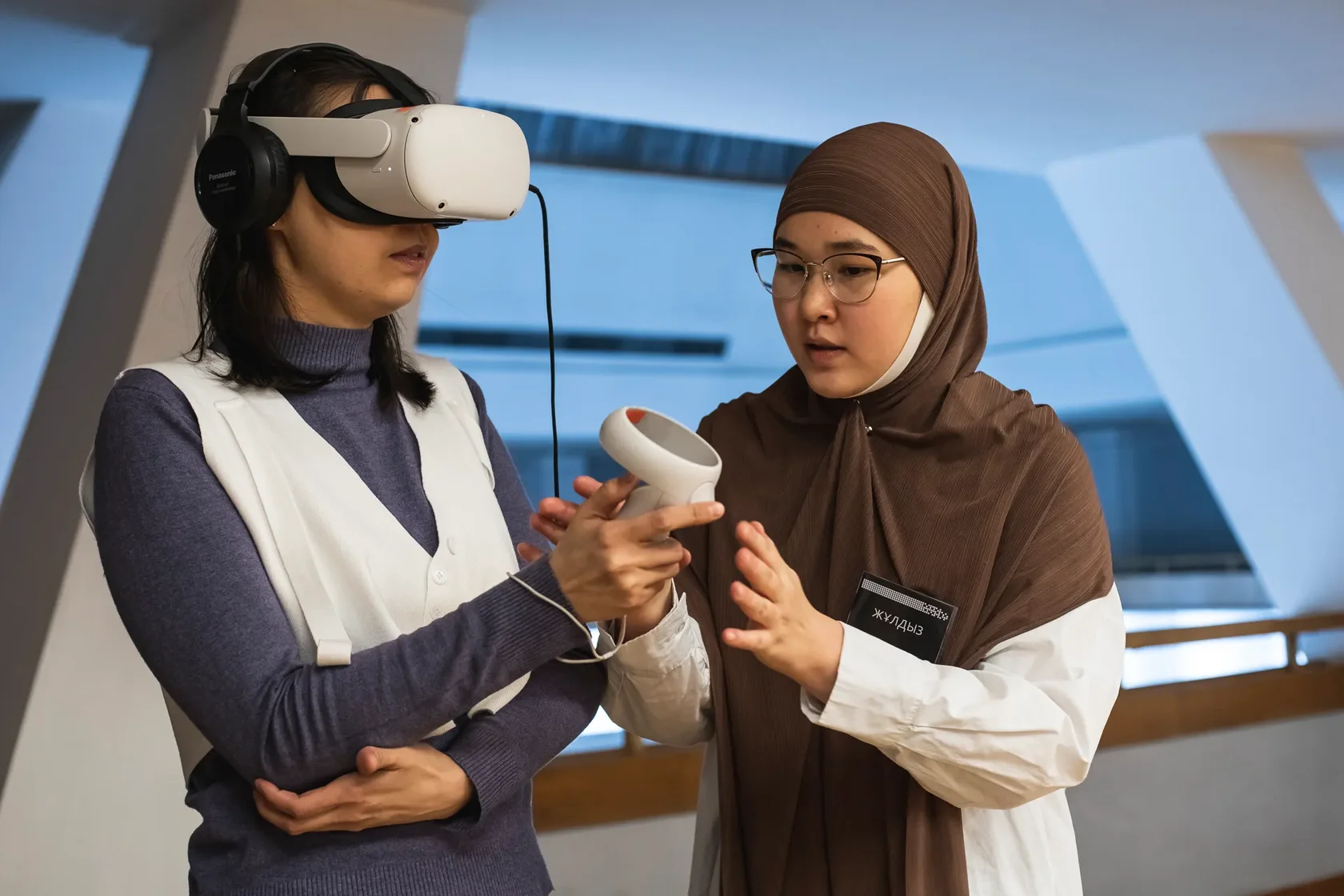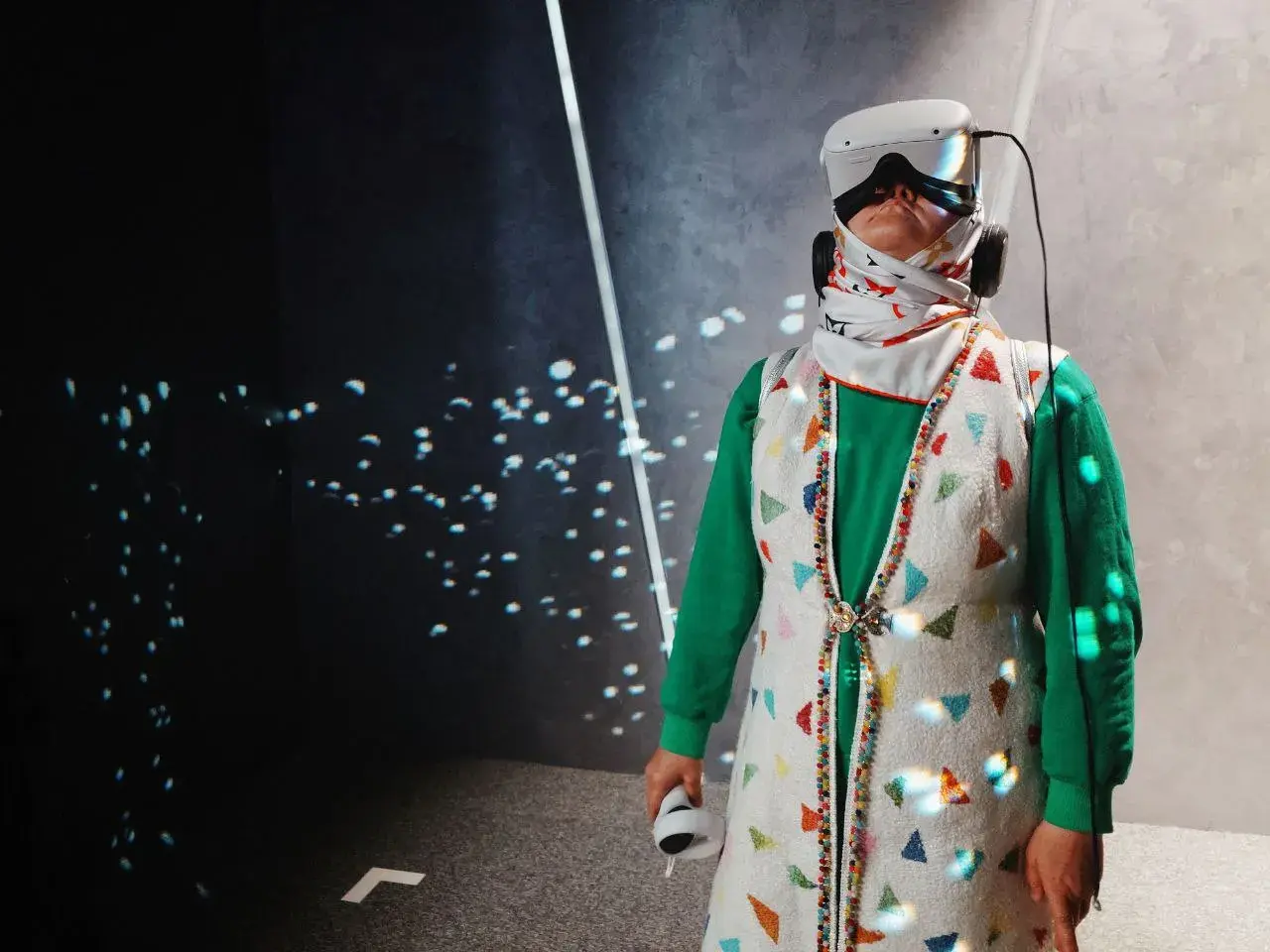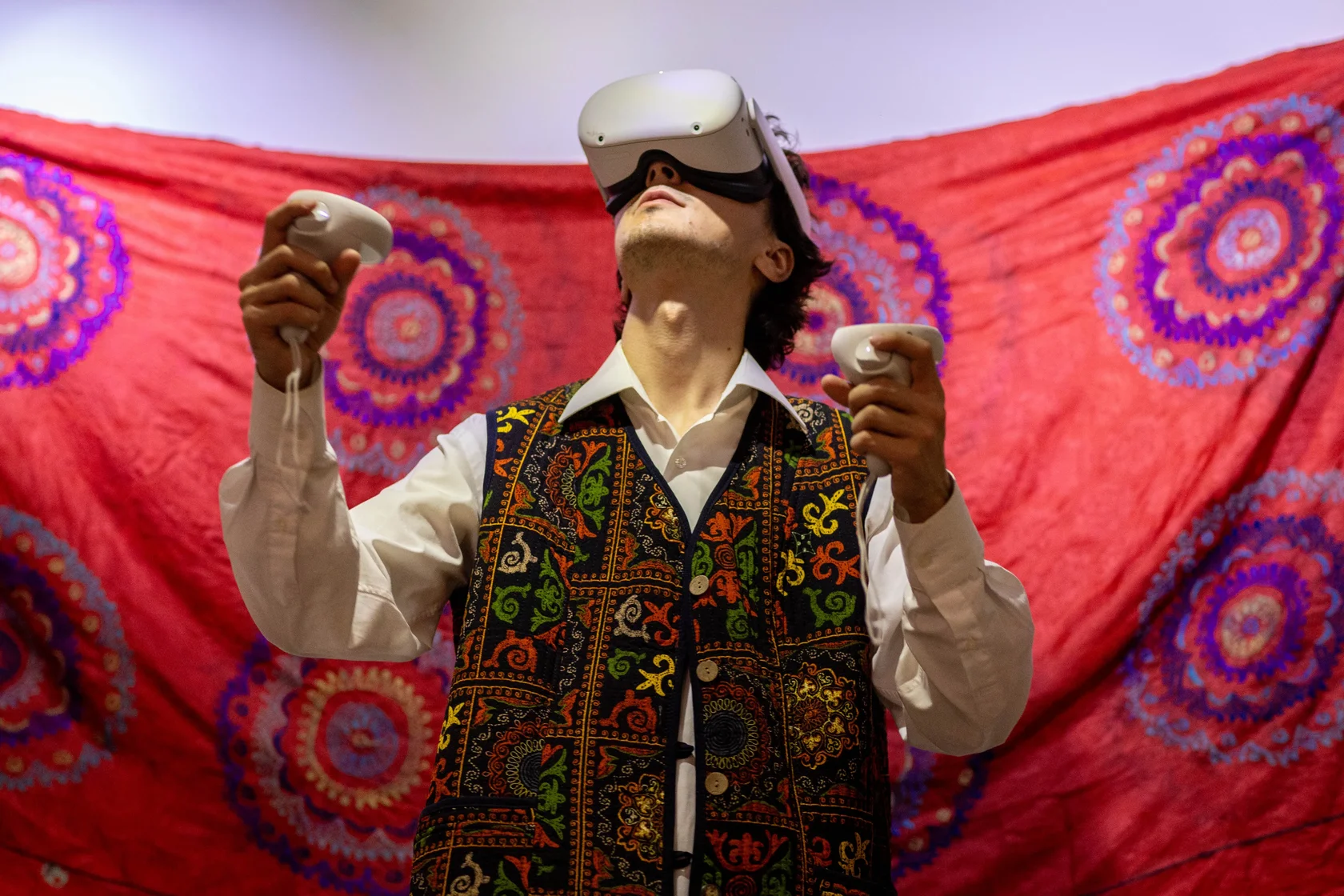This year marks over a decade since I shifted my focus toward immersive content. Yet, after all these years, it still often feels like conversations about VR have to start from square one. Explaining what VR is and describing my work to people outside the industry feels like repeatedly rebuilding foundational knowledge from scratch. The gap between the ‘professional community’ — those who can afford attending prestigious festivals like SXSW or Venice — and the general public, who often have no idea VR even exists, seems to widen year by year.
Distribution remains the most pressing issue facing the immersive content industry, a reality widely recognized by leading experts. For two consecutive years, the Venice Film Festival — the premier international platform for immersive content — has hosted professional roundtables dedicated specifically to distribution strategies. Insights from these discussions have been compiled into detailed reports (2023 and 2024), which I’ll link here.
Distribution remains the most pressing issue facing the immersive content industry, a reality widely recognized by leading experts. For two consecutive years, the Venice Film Festival — the premier international platform for immersive content — has hosted professional roundtables dedicated specifically to distribution strategies. Insights from these discussions have been compiled into detailed reports (2023 and 2024), which I’ll link here.
As I share insights from my experience, I’m specifically drawing from running the Digital Autumn VR festival — an initiative by my team at Less Media Group. For three consecutive years, we’ve introduced artistic VR content to over 10,000 viewers across Uzbekistan, Kazakhstan, and Russia, most of whom were experiencing VR for the very first time. This extensive hands-on experience in physical VR showcases has allowed us to develop an effective approach for presenting immersive content to new and diverse audiences.
A few notes on the VR content we’ve showcased during Digital Autumn:
A few notes on the VR content we’ve showcased during Digital Autumn:
Digital Autumn is a VR initiative led by my team at Less Media Group in exclusive partnership with the French Institute. This partnership allows us to predominantly showcase content produced by French studios or created in collaboration with them. Each year, the extensive content library is refreshed, ensuring we consistently present high-quality, relevant VR experiences. Occasionally, we license additional titles directly from creators or include local productions if they meet our quality standards and resonate with the audiences.
It’s also important to mention that, for the past three years, we’ve exclusively used Quest 2 headsets and have avoided showcasing PCVR experiences. This choice was strategic, focusing on portability, ease of setup, and scalability. Typically, each venue hosts 10 or more Quest 2 headsets, and the duration of VR screenings ranges from three days to three weeks, depending on the partnership structures established in different cities.
It’s also important to mention that, for the past three years, we’ve exclusively used Quest 2 headsets and have avoided showcasing PCVR experiences. This choice was strategic, focusing on portability, ease of setup, and scalability. Typically, each venue hosts 10 or more Quest 2 headsets, and the duration of VR screenings ranges from three days to three weeks, depending on the partnership structures established in different cities.
Key Steps for Successfully
Showing VR to New Audiences:
Venue Selection
In each city, we seek out a local venue to partner with. Over the years, these venues have ranged from startup hubs to major regional museums. One key takeaway — museums work best. Since we showcase artistic works, the museum environment provides the most effective framework for presenting them to audiences. While tech hubs and innovation spaces are relevant, the focus in those settings tends to be on the technology itself rather than the content. To successfully introduce immersive art, we need audiences who are open to engaging with new artistic forms. Museums have consistently provided the best setting for this kind of meaningful engagement.
Technical Setup — Prepare the Headsets:
Ensure you have a capable tech team in place to set up and manage content across all headsets. Internet connectivity can often be unreliable, with speeds too slow to support content streaming. To avoid these issues, we always upload content directly to the headsets — either as 360-degree video files or APK files for interactive experiences. This method is not only more secure but also ensures seamless operation without dependence on internet connectivity.
In each city, we seek out a local venue to partner with. Over the years, these venues have ranged from startup hubs to major regional museums. One key takeaway — museums work best. Since we showcase artistic works, the museum environment provides the most effective framework for presenting them to audiences. While tech hubs and innovation spaces are relevant, the focus in those settings tends to be on the technology itself rather than the content. To successfully introduce immersive art, we need audiences who are open to engaging with new artistic forms. Museums have consistently provided the best setting for this kind of meaningful engagement.
Technical Setup — Prepare the Headsets:
Ensure you have a capable tech team in place to set up and manage content across all headsets. Internet connectivity can often be unreliable, with speeds too slow to support content streaming. To avoid these issues, we always upload content directly to the headsets — either as 360-degree video files or APK files for interactive experiences. This method is not only more secure but also ensures seamless operation without dependence on internet connectivity.

Train the Personnel:
One of our primary goals is to create a comfortable experience for first-time viewers — not necessarily the most exciting or impactful, but the most comfortable. VR technology inherently introduces discomfort: wearing a headset feels unfamiliar, and users may feel self-conscious or even vulnerable in front of others. To counter this, every aspect of the experience — from the environment to the staff greeting visitors and assisting with the technology — must be designed to put viewers at ease. First-time users should feel confident that everything is going smoothly and as expected. To achieve this, it’s crucial to recruit and train the right personnel who are not only familiar with the technology and content but also able to project confidence and reassurance to new users. Their ability to guide and support first-time viewers plays a key role in ensuring a positive introduction to VR.
Selecting the Right VR Content
We typically curate a selection of 10 to 12 titles that align with the festival’s theme for the year. Among these, we ensure a balanced mix to accommodate different audience needs:
One of our primary goals is to create a comfortable experience for first-time viewers — not necessarily the most exciting or impactful, but the most comfortable. VR technology inherently introduces discomfort: wearing a headset feels unfamiliar, and users may feel self-conscious or even vulnerable in front of others. To counter this, every aspect of the experience — from the environment to the staff greeting visitors and assisting with the technology — must be designed to put viewers at ease. First-time users should feel confident that everything is going smoothly and as expected. To achieve this, it’s crucial to recruit and train the right personnel who are not only familiar with the technology and content but also able to project confidence and reassurance to new users. Their ability to guide and support first-time viewers plays a key role in ensuring a positive introduction to VR.
Selecting the Right VR Content
We typically curate a selection of 10 to 12 titles that align with the festival’s theme for the year. Among these, we ensure a balanced mix to accommodate different audience needs:
Content for First-Time Users
The worst mistake is placing a first-time user into an overwhelming VR experience like “Goliath: Playing with Reality” by Anagram and Floreal Films or “Emperor” by Atlas V. While these are excellent, award-winning projects that blend interactivity and narrative in compelling ways, they can be too intense for beginners. For newcomers, we always recommend starting with simpler 3DOF experiences.
Variety in Experience Length
We structure our ticketing in 30-minute slots, allowing viewers to select what they want to watch. Some may choose two shorter experiences, while others opt for one longer piece. We always emphasize flexibility — if a viewer doesn’t enjoy their first choice or feels uncomfortable, they can switch to something different.
Balancing Interactive & Non-Interactive Content
We aim to include as many interactive experiences as possible because fully interactive VR leaves a stronger impact. However, new users often struggle with interactivity, creating risks of confusion or discomfort. To mitigate this:
Comfort Level Considerations
Before a public screening, our team tests each piece and evaluates its comfort level. For example, “Flow” by Adriaan Lokman is a stunning 360° animated experience, a poetic depiction of a windy day in the city. However, at one point, the wind and the environment begin spinning, which can be disorienting, even for experienced VR users. This experience is strictly marked as seated-only to prevent discomfort. Similarly, we assess interactive content for potential motion sickness and complexity, noting if users frequently require assistance.
The worst mistake is placing a first-time user into an overwhelming VR experience like “Goliath: Playing with Reality” by Anagram and Floreal Films or “Emperor” by Atlas V. While these are excellent, award-winning projects that blend interactivity and narrative in compelling ways, they can be too intense for beginners. For newcomers, we always recommend starting with simpler 3DOF experiences.
Variety in Experience Length
We structure our ticketing in 30-minute slots, allowing viewers to select what they want to watch. Some may choose two shorter experiences, while others opt for one longer piece. We always emphasize flexibility — if a viewer doesn’t enjoy their first choice or feels uncomfortable, they can switch to something different.
Balancing Interactive & Non-Interactive Content
We aim to include as many interactive experiences as possible because fully interactive VR leaves a stronger impact. However, new users often struggle with interactivity, creating risks of confusion or discomfort. To mitigate this:
- All staff must go through the experiences themselves to understand potential user challenges.
- We provide clear, concise instructions before users enter an interactive piece (without spoiling the experience).
- Interactive areas are distinctly marked and separated from passive content zones.
- A trained assistant is always present to guide users and ensure smooth participation.
Comfort Level Considerations
Before a public screening, our team tests each piece and evaluates its comfort level. For example, “Flow” by Adriaan Lokman is a stunning 360° animated experience, a poetic depiction of a windy day in the city. However, at one point, the wind and the environment begin spinning, which can be disorienting, even for experienced VR users. This experience is strictly marked as seated-only to prevent discomfort. Similarly, we assess interactive content for potential motion sickness and complexity, noting if users frequently require assistance.

Onboarding & User Guidance
For seasoned VR users, it may be surprising how first-time viewers interact with the medium. Some need simple yet crucial reminders — like being encouraged to look around. Many first-time users become so engrossed in what’s directly in front of them that they forget they can turn their heads to explore the full 360° environment. A brief, friendly reminder before starting can significantly improve their experience.
Language Accessibility
Most of the VR content we showcase is in English or French. While 360° experiences can sometimes be dubbed or subtitled, interactive content generally cannot be translated unless the creators have built in multilingual options. When welcoming viewers, we assess their language comfort level. Younger audiences tend to be fine with English, whereas older viewers often prefer content in their native language. To accommodate this, we always include at least one or two language-free experiences or those with subtitle options.
For instance, “Planet” by Momoko Seto (ARTE) has been a great entry point: short, 3DOF, no dialogue, abstract, and dreamlike. The award-winning “Flow” by Adriaan Lokman, which we showcased in 2024, also worked well, though it required clear instructions due to its motion challenges.
The Impact of Age Differences
One of the most fascinating aspects of working in a museum setting is witnessing the broad range of people experiencing VR. However, generational differences in content preference are undeniable. Younger audiences, accustomed to digital saturation, gravitate toward high-intensity, game-like experiences. They thrive in visually rich, fast-paced environments like “Goliath: Playing with Reality”. Conversely, older audiences often struggle with information overload and lack gaming experience, making such content overwhelming. For them, a slower, more contemplative experience is a better introduction.
Practical Setup for Different Experiences
By structuring content selection carefully, providing clear guidance, and ensuring an inclusive, well-supported environment, we make VR accessible and enjoyable for a wide range of audiences.
For seasoned VR users, it may be surprising how first-time viewers interact with the medium. Some need simple yet crucial reminders — like being encouraged to look around. Many first-time users become so engrossed in what’s directly in front of them that they forget they can turn their heads to explore the full 360° environment. A brief, friendly reminder before starting can significantly improve their experience.
Language Accessibility
Most of the VR content we showcase is in English or French. While 360° experiences can sometimes be dubbed or subtitled, interactive content generally cannot be translated unless the creators have built in multilingual options. When welcoming viewers, we assess their language comfort level. Younger audiences tend to be fine with English, whereas older viewers often prefer content in their native language. To accommodate this, we always include at least one or two language-free experiences or those with subtitle options.
For instance, “Planet” by Momoko Seto (ARTE) has been a great entry point: short, 3DOF, no dialogue, abstract, and dreamlike. The award-winning “Flow” by Adriaan Lokman, which we showcased in 2024, also worked well, though it required clear instructions due to its motion challenges.
The Impact of Age Differences
One of the most fascinating aspects of working in a museum setting is witnessing the broad range of people experiencing VR. However, generational differences in content preference are undeniable. Younger audiences, accustomed to digital saturation, gravitate toward high-intensity, game-like experiences. They thrive in visually rich, fast-paced environments like “Goliath: Playing with Reality”. Conversely, older audiences often struggle with information overload and lack gaming experience, making such content overwhelming. For them, a slower, more contemplative experience is a better introduction.
Practical Setup for Different Experiences
- Individual experience instructions: Clearly mark each piece with whether it should be experienced seated, standing, or as an option for both (e.g., Emperor).
- Adaptive space setup: Ensure clear markings for interactive and passive viewing zones. Provide comfortable seating that can be removed for standing-only experiences.
- Sufficient staff support: At least three assistants per 10 headsets, plus a dedicated host to help visitors select the right experience based on their familiarity and comfort level.
By structuring content selection carefully, providing clear guidance, and ensuring an inclusive, well-supported environment, we make VR accessible and enjoyable for a wide range of audiences.

Summary
If you are planning to showcase VR, be prepared to consider multiple factors:
From my perspective, when working with new audiences, it’s not essential to only showcase the latest VR works. Well-crafted experiences from as far back as 2017–2018 — such as “Notes on Blindness” by ARTE — remain highly effective entry points for those unfamiliar with VR. My strategy is to include 2–3 new titles to engage returning visitors, while keeping a strong foundation of high-quality, proven experiences that offer excitement and accessibility across different audience groups.
The future of VR should not revolve around exclusive industry events catering only to professionals, nor should we keep building an echo chamber where we celebrate each other in a closed circle. Instead, we must expand beyond the gaming community and introduce VR to a wider audience. Initiatives like Digital Autumn are crucial in providing a broad, gentle, and comfortable introduction to immersive experiences. The French Institute has been instrumental in making this possible across various regions by offering a free, high-quality immersive content catalog — a significant step toward making VR truly accessible to all.
- Technical preparation: Ensure you have a tech team in place to be able to run all necessary equipment, including extra headsets, spare batteries, and charging stations, to keep exhibitions running seamlessly for 8+ hours a day.
- Diverse content selection: Offer a mix of short- and long-form experiences (ranging from 10 minutes to 30+ minutes) and varying levels of interactivity (from passive 3DOF video or animation to fully interactive 6DOF VR).
- Staff training: Your team is key! They must be knowledgeable and enthusiastic about VR, able to guide users, troubleshoot issues, and recommend the right experiences for different audiences.
- Language accessibility: Not all visitors will speak English or French. Ensure you include content that is either language-free or has subtitle options for broader accessibility.
From my perspective, when working with new audiences, it’s not essential to only showcase the latest VR works. Well-crafted experiences from as far back as 2017–2018 — such as “Notes on Blindness” by ARTE — remain highly effective entry points for those unfamiliar with VR. My strategy is to include 2–3 new titles to engage returning visitors, while keeping a strong foundation of high-quality, proven experiences that offer excitement and accessibility across different audience groups.
The future of VR should not revolve around exclusive industry events catering only to professionals, nor should we keep building an echo chamber where we celebrate each other in a closed circle. Instead, we must expand beyond the gaming community and introduce VR to a wider audience. Initiatives like Digital Autumn are crucial in providing a broad, gentle, and comfortable introduction to immersive experiences. The French Institute has been instrumental in making this possible across various regions by offering a free, high-quality immersive content catalog — a significant step toward making VR truly accessible to all.
